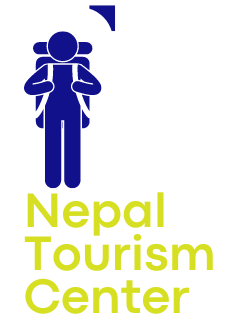Introduction
The Golden Temple (Kwa Bahal) is one of the most sacred and historically significant Buddhist monasteries in Nepal. Located in the heart of Patan (Lalitpur), this stunning temple is a masterpiece of Newari architecture and an important pilgrimage site for both locals and international visitors. Also known as Hiranya Varna Mahavihar, the Golden Temple is a must-visit destination for history lovers, spiritual seekers, and travelers looking to explore Nepal’s rich cultural heritage.
History and Significance
The Golden Temple dates back to the 12th century and is believed to have been established by King Bhaskara Deva. It has existed in its current form since 1409 and has served as a major center for Buddhist learning and rituals. Unlike many other temples in Nepal, Kwa Bahal follows strict monastic traditions and is maintained by a community of Buddhist priests. The temple gets its name from the gilded metal plates that cover most of its frontage, making it one of the most beautiful temples in Patan.
Architectural Beauty
One of the most striking features of the Golden Temple is its exquisite golden facade that gives the temple its name. The temple complex is a stunning blend of bronze, gold, and wood carvings, depicting various Buddhist deities, mythical creatures, and traditional motifs.
Key Architectural Highlights:
- Golden Facade – The temple’s entrance is adorned with intricate golden decorations and statues.
- Sacred Courtyard – Inside the temple complex, a beautifully crafted courtyard houses various statues and prayer wheels.
- Main Shrine – The sanctum contains a golden Buddha statue, which is a revered icon among devotees.
- Tara Shrines – Small shrines dedicated to the goddess Tara can be found inside the temple premises.
- Monastic Quarters – The temple is home to resident Buddhist monks and students who continue ancient rituals and teachings.
- Elephant Statues – Two magnificent elephant statues guard the temple’s doorway.
- Intricate Doorways – Entry is via an ornate narrow stone doorway to the east or a wooden doorway to the west, leading from one of the interlinked courtyards on the north side of Nakabhil.
Interior Highlights:
- The main priest of the temple is a young boy under the age of 12, who serves for 30 days before passing the role to another young boy.
- The main shrine houses a statue of Sakyamuni Buddha (photography is not allowed).
- To the left of the courtyard, there is a statue of Green Tara.
- In the right corner, there is a statue of Bodhisattva Vajrasattva, adorned with a silver-and-gold cape.
- A smaller shrine in the courtyard contains a ‘self-arisen’ (swayambhu) chaitya.
- The four corners of the courtyard have statues of four Lokeshvaras (incarnations of Avalokiteshvara) and four monkeys holding jackfruits as offerings.
- A stairway leads to an upper-floor chapel dedicated to a white eight-armed Avalokiteshvara, featuring Tibetan-style frescoes, including a wheel of life.
- The ceiling at the eastern exit has an embossed mandala worth observing.
- Outside of winter, visitors can spot tortoises wandering the compound, considered the temple guardians.
Spiritual Experience
Visitors to the Golden Temple often experience a deep sense of peace and spirituality. The rhythmic chants of monks, the spinning prayer wheels, and the sight of devotees lighting butter lamps create a serene atmosphere. The temple is an active place of worship, so visitors are encouraged to respect local customs and observe silence within the premises.
Nearby Attractions
While visiting the Golden Temple, consider exploring other nearby temples:
- Uma Maheshwar Temple – A small, two-tiered temple just south of the Golden Temple.
- Gauri Shankar Temple – A stunning stone temple in the Indian shikhara style.
- Buddhist Maru Mandapa Mahavihar – Located in a small courtyard across the road from the Golden Temple.
Best Time to Visit
The best time to visit the Golden Temple is during the early morning or late afternoon when the temple is less crowded. Additionally, visiting during Buddhist festivals like Buddha Jayanti or Gunla (Newar Buddhist month) allows travelers to witness grand rituals and cultural celebrations.
How to Reach Kwa Bahal
The Golden Temple is conveniently located in Patan Durbar Square, one of Nepal’s most famous UNESCO World Heritage Sites. It is easily accessible from Kathmandu by:
- Taxi – A 20-minute ride from central Kathmandu.
- Public Transport – Buses and microbuses run regularly to Patan.
- Walking – If you’re already exploring Patan Durbar Square, the temple is just a short walk away.
Tips for Visitors
- Dress Modestly – Wear respectful clothing as it is a place of worship.
- Photography – Allowed in most areas but avoid flash inside the shrine.
- Respect Monks and Devotees – Maintain silence and follow local customs.
- Entry Fee – A small donation or entrance fee may be required for foreign visitors.
The Golden Temple (Kwa Bahal) is a hidden treasure in the bustling city of Patan. Its rich history, breathtaking architecture, and spiritual ambiance make it an unforgettable destination for travelers. Whether you’re a history buff, a cultural enthusiast, or simply seeking a moment of peace, this sacred monastery is well worth a visit.
Have you visited the Golden Temple in Patan? Share your experience in the comments below!

Leave a Reply